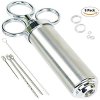Tenevanica
Arachnodemon
- Joined
- Feb 18, 2015
- Messages
- 726
I haven't posted in a while, but here I am. This isn't so much a how to guide as it is just an idea worth sharing. I'm soon acquiring several new additions, including an Ephebopus cyanognathus sling at about an inch. This species requires moist substrate, but it's very difficult to keep vial substrate moist. Spraying does nothing, and you can't really pour water in super effectively without the vial becoming a swimming pool. So, I've come up with this nifty little invention. (Pictures below) It's a straw cut to a length so it reaches the bottom of the substrate, and touches the lid of the vial. I can pour water down the straw and moisten the substrate without temporarily flooding the surface. (I could also see this useful for species that web heavily and need it wet, like Chilobrachys sp.) It's cut so that when the lid is on there's no space between the straw and the lid. A T can't climb down the straw from the surface. There's a little notch at the bottom of the straw to allow water to difuse into the substrate. The spider could potentially burrow next to the straw and get in it that way, but I think that's unlikely, and I've made a little starter burrow on the opposite side of the vial. The straw is secured to the side of the vial with a dab of hot glue.



My Tenevanica trademark crappy photos! (Also, I'm a bit concerned about ventilation. There's four ventilation holes on the sides of the vial providing cross ventilation. If I need to add more, let me know. As this is a moisture dependent obligate burrower, I don't think ventilation is a major concern, especially since there's cross ventilation.)



My Tenevanica trademark crappy photos! (Also, I'm a bit concerned about ventilation. There's four ventilation holes on the sides of the vial providing cross ventilation. If I need to add more, let me know. As this is a moisture dependent obligate burrower, I don't think ventilation is a major concern, especially since there's cross ventilation.)

